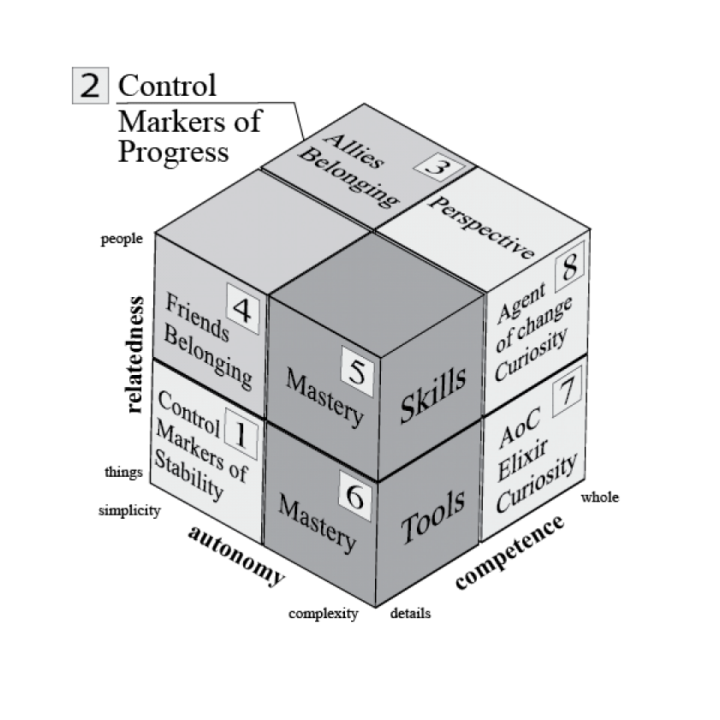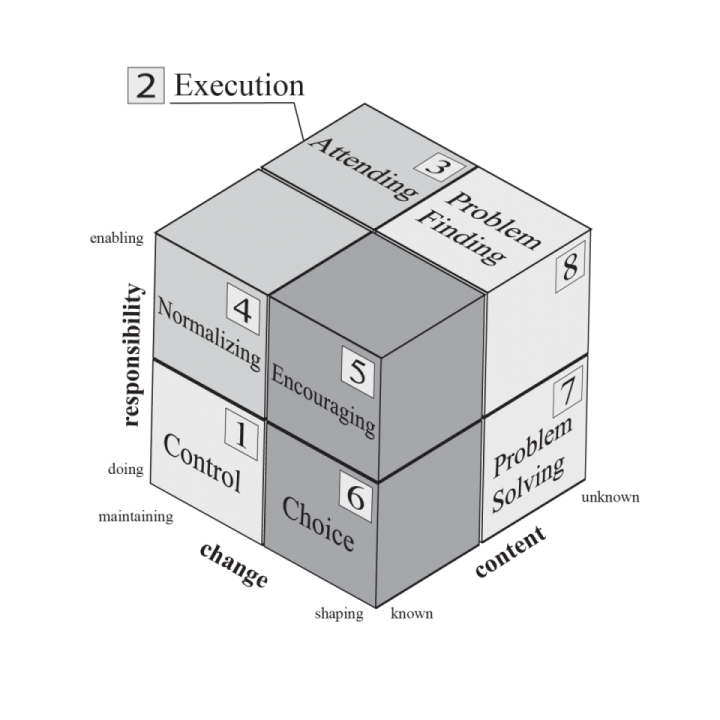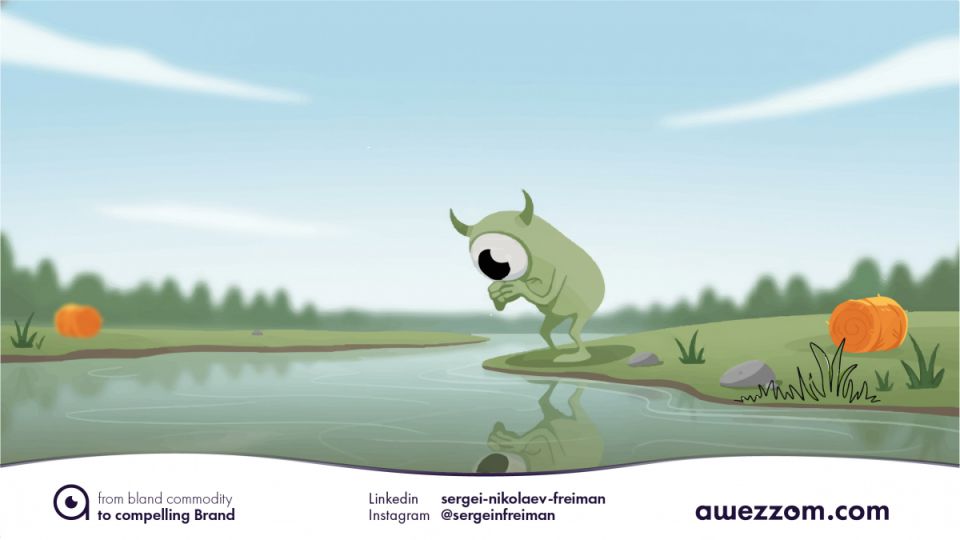This article originally appeared in Legal Marketing Association’s Strategies & Voices in October, 2024. You are reading an alternative version of the original article. The need for an update comes from recently identified additional categories and commentary that haven’t been included in the original piece.
Earlier this year (2024), my family and I got lost in the woods. We went to a hiking area 50 miles north of NYC called the Breakneck Ridge ― a place we had been to thrice. We took a familiar path, and I, feeling impervious to happenstance, didn’t pay as much attention as I should have. Although being adrift in the woodlands was somewhat embarrassing to me personally, in hindsight, the experience was illuminating.
Clients of professional services firms often find themselves in the woods too. Not necessarily lost ― although sometimes they are ― but certainly moving from point A to point B, from current state of affairs to a different, better future state. Otherwise, why move at all? As my misfortune helped me understand, along the way, there are four basic motivations and ensuing eight goal facilitators that can explain what clients are really interested in buying from professional practices.
Four primary client motivations
Proposed by a clinical psychologist Richard M. Ryan and a professor in the Social Sciences Edward L. Deci, the Self-Determination theory (SDT) is focused on understanding how “human motivation is functionally designed and experienced from within, as well as what forces facilitate, divert, or undermine that natural energy and direction” (Ryan & Deci, 2017). The authors investigated human motivation in various contexts (including work setting) and identified three fundamental psychological needs for: competence, relatedness, and autonomy.
Having studied the SDT from the buyer-seller relationship perspective, I was able to identify four basic motivations that prime (drive) client behaviors: Control, Belonging, Mastery, and Exploratory curiosity. Working on a related subject of professionals’ motivation during client engagements, I have stumbled on findings of two Harvard Business School professors who, to my surprise, have identified four similar motivations: defending, bonding, acquiring, and learning. The two scholars make an intriguing claim: “we all are driven by four biological motivations” (Lawrence & Nohria, 2001).
The aforementioned suggests that neither buyers nor service providers are exempt from four basic motivations. Hence, will positively respond to satisfaction, and negatively to frustration of these motivations.
Other than priming behavior, motivations set up perceptual frames, and participate in goal setting. Hence, moving from current to preferred future state, clients will be interested in purchasing up to eight goal facilitators:
- markers of Stability and Progress
- Tools and Skills
- Allies and Friends
- Elixir and Perspective as change agents.
Figure 1 exhibits the mapping of four motivations and goal facilitators. The three dimensions of this map have been adapted from Ryan & Deci’s three universal psychological needs.

Eight goal facilitators
As clients progress toward a desired destination ― a goal, or future state ― Markers of stability and progress inform and reassure them that things are going according to plan. That everything’s under control. That we’re still on the right track, and moving. Motivated by sense of Control, clients will be interested in paying for such markers.
When clients can’t deal with adversity or foes themselves, they will require Allies and Friends. Tools and Skills are another valuable goal facilitator some clients will be ecstatic about. And just as precious is an Agent of change. To illustrate these propositions, I will continue with my opening story.

A typical hiking trail is equipped with various trail signs: discs, paint marks, and symbols ― markers that help hikers stay on track. Because I had long stopped paying attention to those markers en route, eventually we found ourselves off-track. Having made several failed attempts to find the trail, I felt everyone’s anxieties kicking in.
Moving in all directions at once is rarely a prudent option. Because any direction is better than staying put in the forest, I chose a more promising path to follow. Shortly, we found the markers ― blue disks attached to tree trunks. Alas, we needed the white ones.
Following down the blue trail for a short while we encountered the ultimate adversary. As we were approaching a large fallen tree trunk on the right hand side, it had crossed my mind to inform everyone that this is probably an ideal hiding spot for snakes. My gaze shifted to the left, and a split second later it jumped back focusing on a large black monster slithering across our path toward another tree.
It stopped there. Pantherophis Obsoletus ― a giant black rat snake — as thick as my arm and six feet long lay at a couple feet distance from the trail, waiting to strike (as I had already imagined it to). At the time, I had no idea these were harmless to humans.
By the time we have avoided direct confrontation with the snake, my makeshift staff shattered from pounding the ground in futile attempts to scare off the beast, we were exhausted. Following the blue trail, we ended up at a private property. We had to turn back. Getting shot at for trespassing wasn’t on the menu. At that moment, paying another visit to the monster’s den didn’t seem like a great idea either. But there were no other predetermined routes we knew of.
We had two tools and one skill to put to good use: a trail map, smartphones with poor coverage, and my amateur orientation skills. After some high-tension planning ― already breathing heavily ― we rushed a nearby hill. Dashing through an uncharted territory in an uphill battle was a treat in of itself. My legs were shaking. Thankfully, at the summit we found a new path. By that time anxieties were at a peak too. A member of my group plumped down on a fallen tree trunk, head buried in hands. After a five-minute rest, we went on.
When you ’d think it couldn’t get more archetypal than that, eventually we found ourselves at the crossroads. Three paths to take. Two ― equally promising. No time to explore because in a couple of hours the sun would set.
Sure enough, resting in the shade was a Lady of the Woods: a fellow hiker. She played her role beautifully. When I told her we were lost, her first response was perfect: Where are you going?
She pointed us in the right direction. Thanks to her, we changed our course, and in two hours were safely back in a nearby town.
Given this story, let’s identify the goal facilitators. Colorful discs on tree trunks, paint markings on trees and boulders, the trail itself are markers of stability. They inform us that we’re on the right track; nothing to worry about. Sign posts with You are here maps and the remaining next-milestone distances are markers of progress.
My makeshift staff, our phones, hiking boots, water bottles are tools for the journey. Orientation and survival skills at which I wasn’t terrific at are just that — skills. Decision-making is also a skill. Someone has to take responsibility for selecting direction, how to approach dealing with adversity and obstacles, which tools to put to good use, and when to ask for help.
Having encountered what felt like the ultimate adversary, — the terrifying Rat Snake Queen herself — I had to act as an ally for the group. Friends category is akin to Allies. The main difference rests with the level of interpersonal intimacy (close, friendly relationships) and the capacity of having a good a time together. In that sense, on this journey, the members of the group were friends who supported and encouraged one another.
The fellow hiker who pointed us in the right direction at the crossroads was an agent of agent. Her actions fall under the perspective category. The only goal facilitator that I think we haven’t encountered during this journey was an elixir. Although, it may be argued that the overall experience was transformative for the group. Well, for me anyway, which probably explains the sudden surge in graphomania.
Because it often gets overblown by marketing folks, thinking of clients’ buying process as a journey may provoke some eye-rolling. However, the journey is real. And clients will actually be willing to pay for goal facilitators that aid them in getting to the desired future state. Those who’ve already been lost in the woods, will be less price sensitive.
Eight value activities to create and capture value
Professors at the Norwegian School of Management formulated the concept of a Value shop, which is applicable to professional services. Originally, the framework breaks value creation process into five primary activities (Stabell and Fjelstad, 1998). However, my analysis suggests the following eight to be key:
- problem-finding and acquisition
- problem-solving
- choice
- encouraging
- normalizing
- attending
- execution
- control and evaluation
Figure 2 maps Value Activities onto the octants of Figure 1 map. Business developers and marketers should be able to infer client motivations from the value activities the client is eager to pay for, and vice versa. For example, if the client comes in self-prescribed, ― knowing exactly what they want, how to do it, and why ― this sends a strong signal that Problem-finding activities are pretty much pointless.
Value activities are essential to great service offering design (SOD), prosperity of the practice, and client satisfaction. These activities are that which clients are often exposed to in real time during service provision. Hence, they are often perceived as more valuable than the technical quality of the work.
Professional firms may intentionally select and adjust the intensity of Value Activities, thus fine-tuning service offerings, which allows to capture more value for the practice while simultaneously creating more value for clients.

To read this map properly, note that all eight value activities may be important to the client. In addition, clients may be equally motivated by several motivational forces simultaneously (e.g., Control and Mastery). However, when push comes to shove ― e.g., the fees must go down ― value activities pertinent to their respective octants are typically the ones to be altered last.
How marketers may apply these concepts?
First, you may want to use goal facilitators as a framework for your marketing communications. For example, (1) as markers of Stability and Progress, your firm may highlight availability of: client dashboards, checklists, gauges, reports, task boards, progress status ― assets that cater to clients’ sense of Control.
(2) As Tools and Skills: client training and coaching, access to special resources, such as databases, project (case) management software, or contract management system, document templates, etc.
(3) As Allies and Friends: insights, professional gossip, intuitions, protection from adversity, rapid-response teams, conflict of interest prevention, roundtables with peers, etc.
(4) As Agents of change: new business opportunity exploration, advisory, business introductions, anticipation of and response to major industry shifts, novel approach proposal, etc.
Second, at the client qualification stage, you may be in the best position to asses which Value Activities will be of importance to the client. This will allow professionals to adjust their work flow which inevitably impacts profitability of an engagement and overall fees.
Third, because functional deliverables aren’t the only criteria of best client fit, you may want to inform professionals about client motivations, priorities, and expectations, juxtaposing them against both your professionals’ (functional) capabilities and (emotional) willingness to get involved.
Participate in designing pre-packaged solutions. With less ad hoc activities, teams are typically more effective and productive. Having well-designed, readily available packages on client pitches allow account managers, sales managers and business development folks to swiftly pick the most suitable one, and adjust the components on the fly. Without having the necessity to sacrifice quality or fees.
Similarly, understanding client motivations, Goal facilitators and Value activities, provides a framework for proposal drafting. Based on preliminary diagnostics, consultation, client type assessment or whatever means of client qualification your firm employs, you can help streamline RFPs.
The aforementioned framework may help during market shifts too. While demand for functional deliverables is likely to vary over time, the underlying four motivations and goal facilitators are universally constant. When the time comes to reconfigure your firm’s service lines, you will have your primary SOD toolkit at the ready. Which makes you personally evermore valuable for the practice.
Being on the front line allows you to keep track of most current changes in client preferences. The more proficient you get with identifying client needs through vetting, qualification, diagnostics, behavioral tells, as well as knowing which levers to pull in response to change in demand, the more valuable you are to the firm. Because you will have a front seat and a hand on clients’ pulse, you will be in a better position to elevate your role in firm’s business strategy formulation.
Professionals will be the ones who deliver (execute) the bulk of the service. Because word-of-mouth will always be a significant marketing channel, it is paramount to match (and aim to exceed) client expectations. For such probability to increase, it is vital to make sure professionals can, want and will commit to particular service provision activities. BDs and marketers can take up a role in bringing professionals together to formulate the most exciting type of client work most professionals will be excited about.
As the client work unfolds, both the environment and client preferences might change. Knowing which Value activities and Goal facilitators may emerge as prevailing will allow for quicker response.
Conclusions
Today, we’ve covered a lot of ground in one fell swoop: four motivations, eight goal facilitators, eight value activities, and a handful of practical tips. Turns out, beneath the surface of every service offering are motivations, goals, and expected value. Alas, this isn’t an exhaustive list of all things pertinent to great SOD. If you intend to do something with service lines at your practice, understanding client motivations is a great place to start.
References
Lawrence, P. & Nohria, N. (2001). Driven: The Four Drives Underlying Our Human Nature - Driven: How Human Nature Shapes Organizations. Harvard Business School Working Knowledge. October 9, 2001.
Ryan, R.M. & Deci, E.L. (2017). Self-Determination Theory. The Guilford Press, pp.10-11
Stabell, C.B. & Fjeldstad, Ø.D. (1998). Configuring value for competitive advantage: on chains, shops, and networks. Strategic Management Journal, Vol.19, pp. 413–437.
The awezzom question of the day:
Apart from functional value of our service offerings, what do we know about other kinds of value our clients seek?

